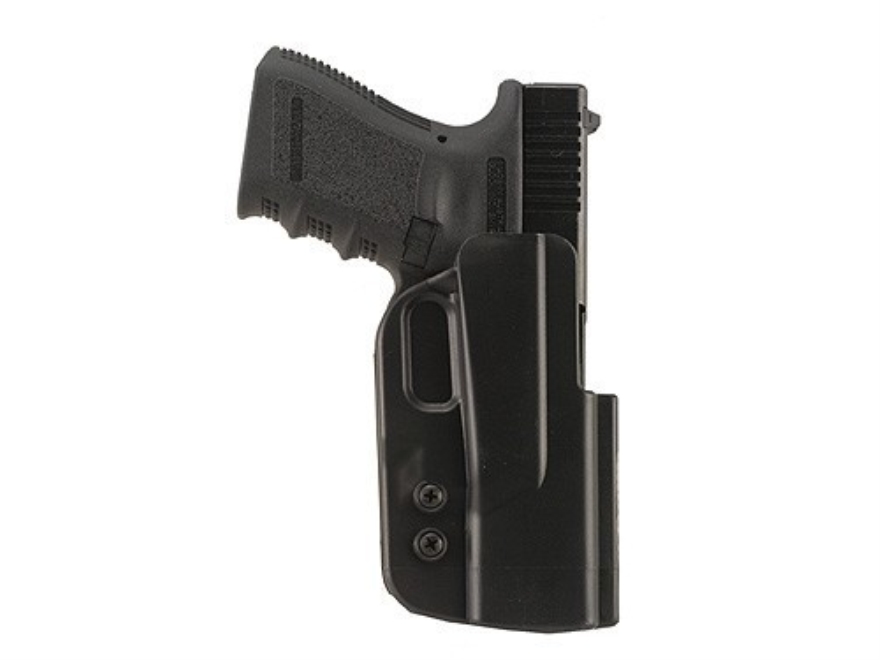Today’s defensive handgunsare rugged, reliable machines, but they won’t stay that way if they’re not properly maintained. While most shooters will be careful to keep their guns dry and free of debris, it’s not uncommon for handguns to be fired without the benefit of regular cleaning and proper lubrication. Shooting handguns dirty or dry (or both) can result in malfunctions and permanent damage.
To avoid these problems, recreational shooting guns should be cleaned and lubricated as soon after use as possible if they’re going into storage, or on a regular basis if they are shot often. Defensive handguns should have a much stricter cleaning schedule. They should be cleaned immediately after a range session, stored clean, carried clean, and regularly checked for dirt build up and proper levels of lubrication. There’s no good reason to sacrifice a defensive handgun’s reliability when just a few minutes’ work could make all the difference.
Before cleaning a handgun, it’s important to spend some quality time reviewing the owner’s manual. If a manual did not arrive with your pistol, order one or review it online. Handguns almost always require some level of disassembly for cleaning. Be sure to understand the layout of your pistol and the tools and procedures for disassembly, reassembly and the points on the pistol where lubricant will need to be applied. This will help you to avoid damaging the gun, launching springs across the room or leaving key parts of the gun unlubricated.
A basic handgun cleaning tool set includes solvent to help remove lead and powder fouling, lubricant (gun oil), a bore brush, a patch holder and patches, and a cleaning rod. A few more items can come in handy, like a nylon cleaning brush, a small bore light or flashlight, and cotton swabs for tight spaces. The finer points of what a particular handgun needs to get clean changes with each make and model. As you get to know your particular firearm, what additional tools are useful will become evident. However, the overall cleaning process remains the same no matter the model.
Work in a well-ventilated area that’s been prepared for gun cleaning. The chemicals and compounds produced by shooting, as well as the ones used to clean and lubricate, are toxic and should be handled with care. A quick and easy way to prepare a workbench or table is to cover it with a large plastic trash bag. Cover the bag with a couple of layers of newspaper pages, then a layer of paper towels. You can swap out the paper towels as they become soiled. When you’re done with the cleaning session, just turn the trash bag inside out to capture the debris, tie it shut, and throw it away. It’s a good idea to wear safety glasses and protective gloves to reduce exposure to toxic materials.
Ensure the gun is unloaded and pointed in a safe direction before you start cleaning. We’ve all heard stories of someone getting hurt while cleaning their guns. Since it takes three components to create a shooting accident (a gun, ammunition and a shooter), it makes sense to remove any ammunition from your work area. Along with safety considerations, solvents and lubricants can damage ammunition resulting in a failure to fire.
It’s rarely necessary to take a pistol completely apart for anything other than repairs. Field stripping is the process of partially disassembling a pistol for cleaning. For semi-autos, the pistol is broken down to its major components, such as the barrel, slide, guide rod, frame and magazine. Semi-autos have a wide variety of configurations, so be sure to read your manual. For single-action revolvers, the cylinder is removed from the frame. For double-action revolvers, simply swing the cylinder out into the open position. Any of the three types of handguns may require you to remove the grip or grip panels as part of the cleaning process.
The interior of the barrel is one of the most important parts of a handgun to clean properly–and the most labor intensive. The layer of material left in the barrel after shooting sessions can reduce the pistol’s accuracy and corrode the rifling. To begin, attach a bore brush to the cleaning rod. Apply solvent to the brush and push it back and forth through the bore of the barrel several times. It’s a good idea to add solvent to the brush once or twice more as you work.
Once the bore of the barrel is thoroughly scrubbed, remove the bore brush from the cleaning rod and attach a patch holder. Attach a patch and run it through the barrel. The first patch will be quite dirty and will need to be replaced. Swab the bore with a few more patches until they start to come out of the barrel looking relatively clean. Use a light to check the barrel bore. If you still see fouling stuck to the interior of the barrel, run the brush and solvent again, followed by a few more patches. Finally, run a clean patch treated with a little gun oil or lubricant through the bore. This thin layer of oil will protect the rifling from moisture.
This process is only conducted once for semi-autos, since you just have the barrel to clean. Revolvers, on the other hand, essentially have one long barrel and five or six short “barrels,” called chambers, in the cylinder. Each chamber should be brushed and patched like the barrel. Now it’s time to clean the rest of the handgun.
Use your nylon brush, with some solvent, to scrub the other parts of the gun, and then use the rags to wipe off the solvent and residue. Be thorough in your inspection of the pistol. If something looks dirty, it is. Check the nooks and crannies for a buildup of fouling. For semi-autos, pay close attention to cleaning the slide’s interior grooves, under the ejector and the contact points between the slide and the frame. For revolvers, keep an eye out for build up around the forcing cone, the face of the cylinder, and the cylinder ratchet. For double-action revolvers, don’t forget to check under the ejector star as well.
It’s not necessary to get the gun dripping wet with solvent. A little goes a long way. How much cleaning attention is needed, and where it should be directed, depends on the gun and how much it has been shot. Just like your work with the patches, if you rub an area with a clean cloth or swab and it comes away smudged, more cleaning is required. Wipe the pistol clean of all solvents before applying lubricants.
The lubrication points differ from pistol to pistol. In general, semi-autos need lubricant where the various parts rub against each other as the action cycles. Revolvers need only a little lubrication. Single-actions need some on the cylinder pin and ratchet, while double-actions need some on the ejector rod and cylinder ratchet. The key is to not over lubricate. Too much will only serve to attract and hold gun fouling. Using cotton swabs to apply lubricant to key points in semi-autos, and small drops of lubricant to the right spots on revolvers, provides just enough, but not too much.
The barrel bore is now clean and treated with a light coat of oil. The major parts of the pistol have been scrubbed or wiped with solvent, and then wiped clean. The lubrication points have been treated according to the directions in the manual. Now it’s time to reassemble the pistol. Once it’s all back together, cycle the action a few times to spread the lubricant evenly and to make sure everything is working correctly. If any lubricant oozes out of joints, wipe it off with a rag.
To protect the exterior finish of the gun, it needs a light coating of preservative. Apply a little gun oil or metal preservative to a clean rag and wipe down the outer surfaces of the pistol, and the cleaning process is complete. Place the pistol in its designated locking container, clean up the work area, and then wash up with soap and cool water.
If all of this scrubbing and rubbing seems overly time consuming, or if you have multiple guns to clean, then another option is available. Ultrasonic cleaners are electrically powered cleaning tanks that use a combination of ultrasound and cleaning solvent to scrub small objects in a short period of time. This technology has been adapted for cleaning gun parts. For example, Hornady’s Lock N Load product line provides a variety of ultrasonic cleaners along with solvent solutions specifically formulated for cleaning gun parts.
It’s important to note here that the cleaning solutions used in ultrasonic cleaners are water based. And as we all know, leaving a gun in a wet condition is a bad idea. After the sonically-scrubbed gun parts have been thoroughly rinsed and dried, an ultrasonic cleaning unit can be filled with a lubricating solution. This second treatment will displace any remaining moisture and leaves the components coated with a lubricating film that protects against rust. The Brownells’ website is a good place to start learning more about ultrasonic products. They have their own cleaning solutions and lubricants for ultrasonic cleaners, as well as a variety of other options. Although ultrasonic cleaning systems require a larger up-front investment than brush & patch systems, they can save shooters a good deal of time in the long run.



